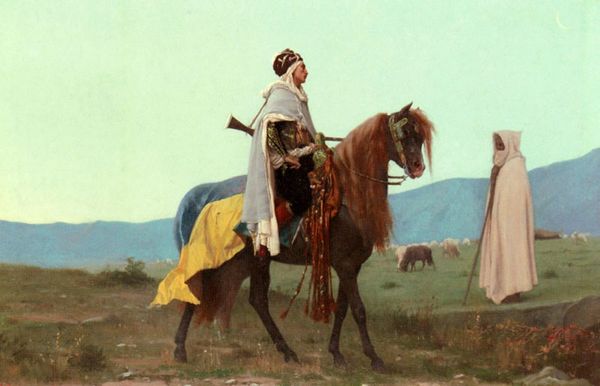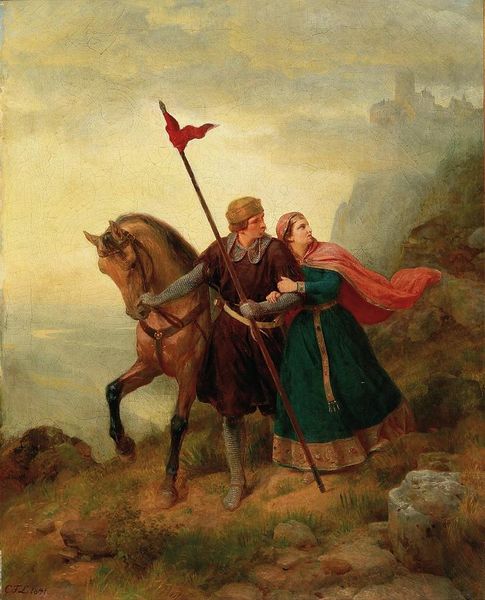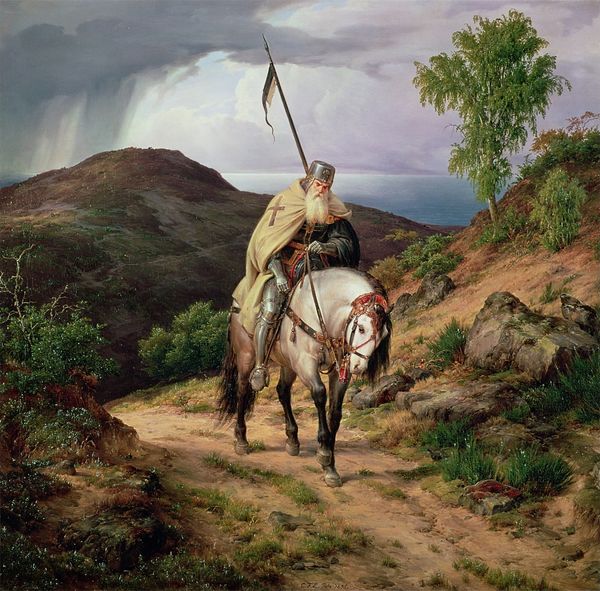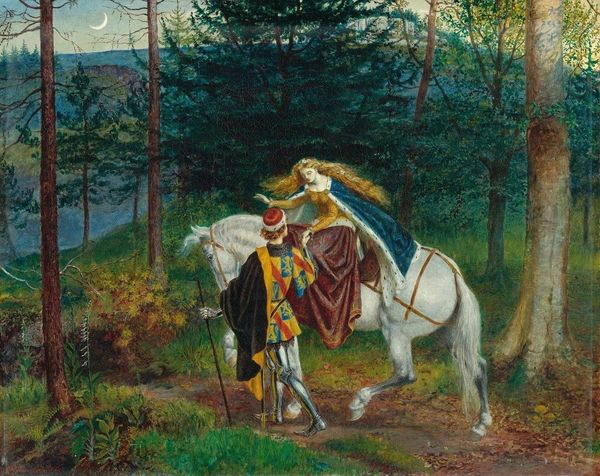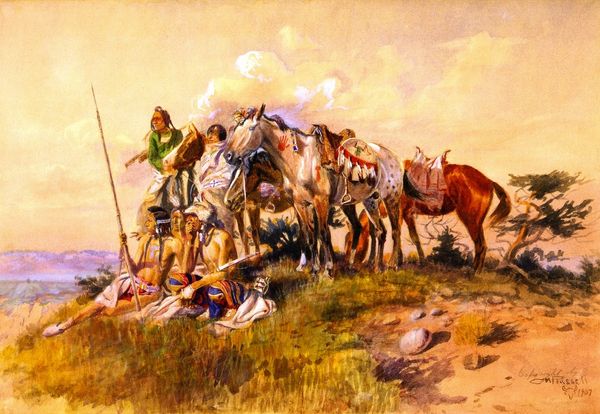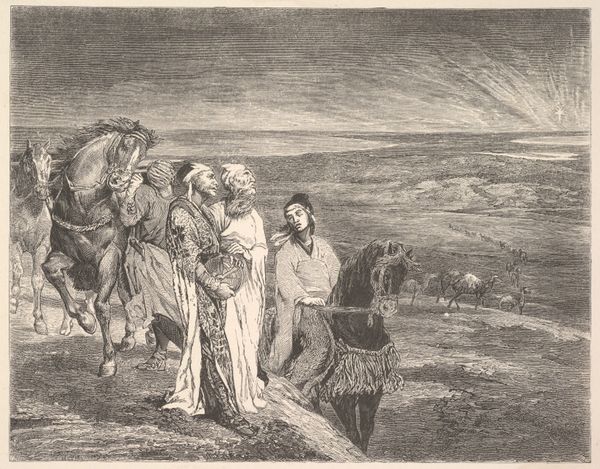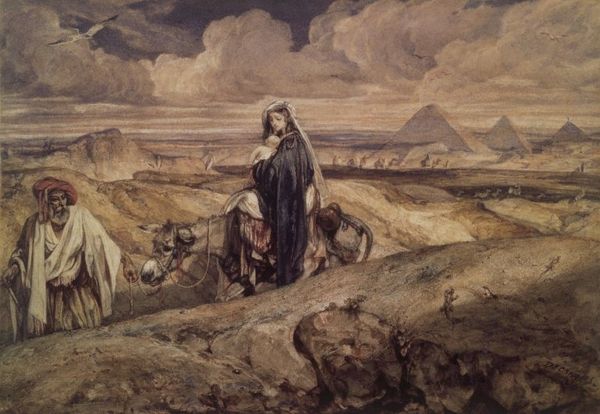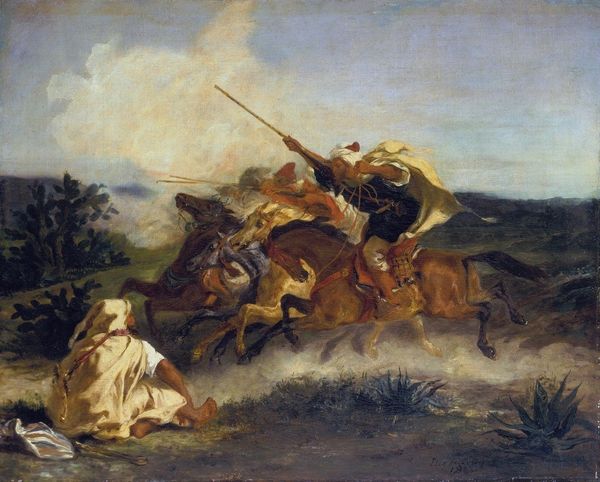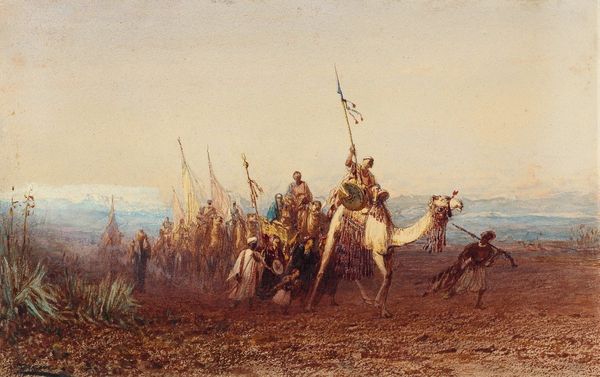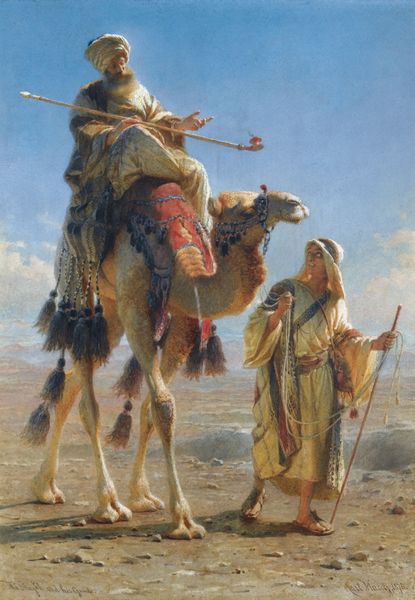
Copyright: Public domain
Curator: Let's take a closer look at James Archer’s 1871 oil painting, “Merlin and Lancelot”. The artwork depicts the two figures on a journey through a somewhat mystical landscape. What’s your initial impression? Editor: The immediate feeling is one of isolation, don’t you think? Both figures seem deeply solitary despite their shared path. The colours are quite muted, emphasizing the distance between them, the overall tone rather somber. Curator: I agree. This piece comes to us from a Victorian fascination with Arthurian legend and romantic ideals, with an interesting juxtaposition. It depicts the powerful figures from different social and hierarchical milieus. Lancelot, of course, represents a life in a society that requires constant fighting and bloodshed, in contrast with Merlin’s solitude, knowledge and magic. Editor: That's right. Note the social and symbolic burden Lancelot bears. Archer gives the knight an assertive presence as a soldier-figure while the sorcerer has more ambiguous presentation; with all the medieval narrative, there are definite undercurrents about gender, representation, and authority. Merlin here is both knowing and vulnerable. His attire completely hides and silences his physicality: is Archer making a statement? Curator: Perhaps. During this era, Arthurian legend was a lens through which the Victorians examined their own societal anxieties and aspirations. Merlin, often seen as an advisor to Arthur, reflects Victorian interests in mysticism and the past. Editor: And it speaks to broader, enduring concerns regarding power and vulnerability. Also consider that at this time England itself was constantly faced with these power and cultural issues within its vast empire and on a society rapidly moving to modern ways of life. These romantic depictions helped them create narratives. Archer shows the figures existing side by side, which gives an alternative of their power balance at the time, suggesting how complicated hierarchies are. Curator: Ultimately, I find that "Merlin and Lancelot" encourages us to reflect on our relationship to the stories we tell ourselves. Editor: Absolutely. It provokes us to ask: who holds the power, who seeks knowledge, and what paths do we choose to forge our own identities?
Comments
No comments
Be the first to comment and join the conversation on the ultimate creative platform.

